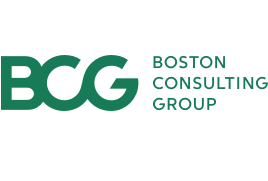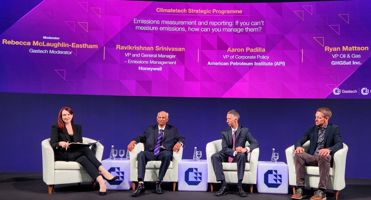Since Davos 2023, the EU has responded to the US Inflation Reduction Act (IRA) by unveiling its Green Deal Industrial Plan. This plan aims to boost sectors crucial for achieving climate neutrality. It involves adjusting state aid rules and increasing investments to strengthen the EU's position in the global green technology market. One key initiative is the European Hydrogen Bank (EHB), which was launched in 2023. The EHB addresses investment challenges in hydrogen production and works towards the EU's ambitious goal of producing 10 million tons of renewable hydrogen by 2030. The EHB funds renewable hydrogen projects by conducting sealed bid auctions and encourages private investments in the value chain. This initiative aims to create a reliable market for renewable hydrogen using a multi-billion-euro budget sourced from EU ETS revenues and contributions from EU member states .
The first EHB auction has been awarded €0.72 bn. The process was highly competitive, and the winning projects were only from four different countries – namely Spain, Portugal, Norway, and Finland – although projects from all 30 European Economic Area (EEA) states were eligible . The winning bids of up to 0.48 €/kgH2 were lower than what the market expected is required to close the gap in the hydrogen business cases (see Figure 1).
The second EHB auction is planned with an expected funding of €2.2 bn. If – hypothetically – the first-round loosing bids would remain unchanged for the second auction, winning bids of up to ~1.0 €/kgH2 are obtained when considering the expected budget of the second EHB auction this autumn and the supplementary funding from Germany. But bidders will revise their pricing and new bidders are expected to enter as well. Can we expect higher prices than the 0.48 €/kgH2 in the next round?

Figure 1: Bid price merit order of the first EHB auction. Visualization for the second EHB auction includes German national pot (€0.35 bn) which was piggybacked for the first EHB auction. Source: EU Commission
In addition to the Europe-wide EHB auction, there are also country-specific schemes. If, we again use the first-round bids as proxy, winning bids from national funding could potentially be significantly higher. For example, Austria has announced a national funding of €0.4 bn for the next round. This could result in winning bids of up to ~2 €/kgH2 (see Figure 2). Such funding levels are closer to the US IRA subsidy of up to $3/kgH2. However, a detailed LCOH and business case analysis would be necessary to make a direct comparison between projects.

Figure 2: Bid price merit order of the first EHB auction on a national level for selected countries. Budget of the German national pot is €0.35 bn and announced budget of the Austrian national pot is €0.4 bn. Source: EU Commission
Looking ahead, it will be interesting to observe the evolution of winning bids in the upcoming EHB auctions. We expect changing dynamics in the second EHB auction, given the EU Commission proposed more stringent requirements in the draft auction rules. For example, the completion guarantee is increased from 4% to 10% of the maximum funding, implying that bids will have to be more mature and robust. Furthermore, the time to COD is reduced from 5 to 3 years, likely supporting ‘fast followers’ that efficiently integrate project optimization, supply chain management, and subsidy application and would stand ready to deliver projects by 2028.
The industry eagerly anticipates future auction outcomes. Will winning bid prices increase? How will they compare to the US, where a fixed subsidy amount is awarded? And what will happen in other markets such as Australia with the recently announced 2 AUS$/kgH2 industry support similar to the IRA?
________________________
1 Emission Trading Scheme
2 Supplemented funding is country-specific, e.g., funding from Germany is only applicable to projects located in Germany.
3 Noteworthy, multiple countries without winners in the first auction have subsidy initiatives beyond the EHB, such as OWE 2024 in the Netherlands or the recently completed PtX tender in Denmark.
4 We expect loosing bidders to further refine their bids for the second EHB auction.
5 especially in light of the US finalizing its tax regulations on 45V, which will determine the level of IRA subsidies individual projects can secure
6 Levelized cost of hydrogen
7 Commercial operations date
Annex. Bio’s key authors.





























